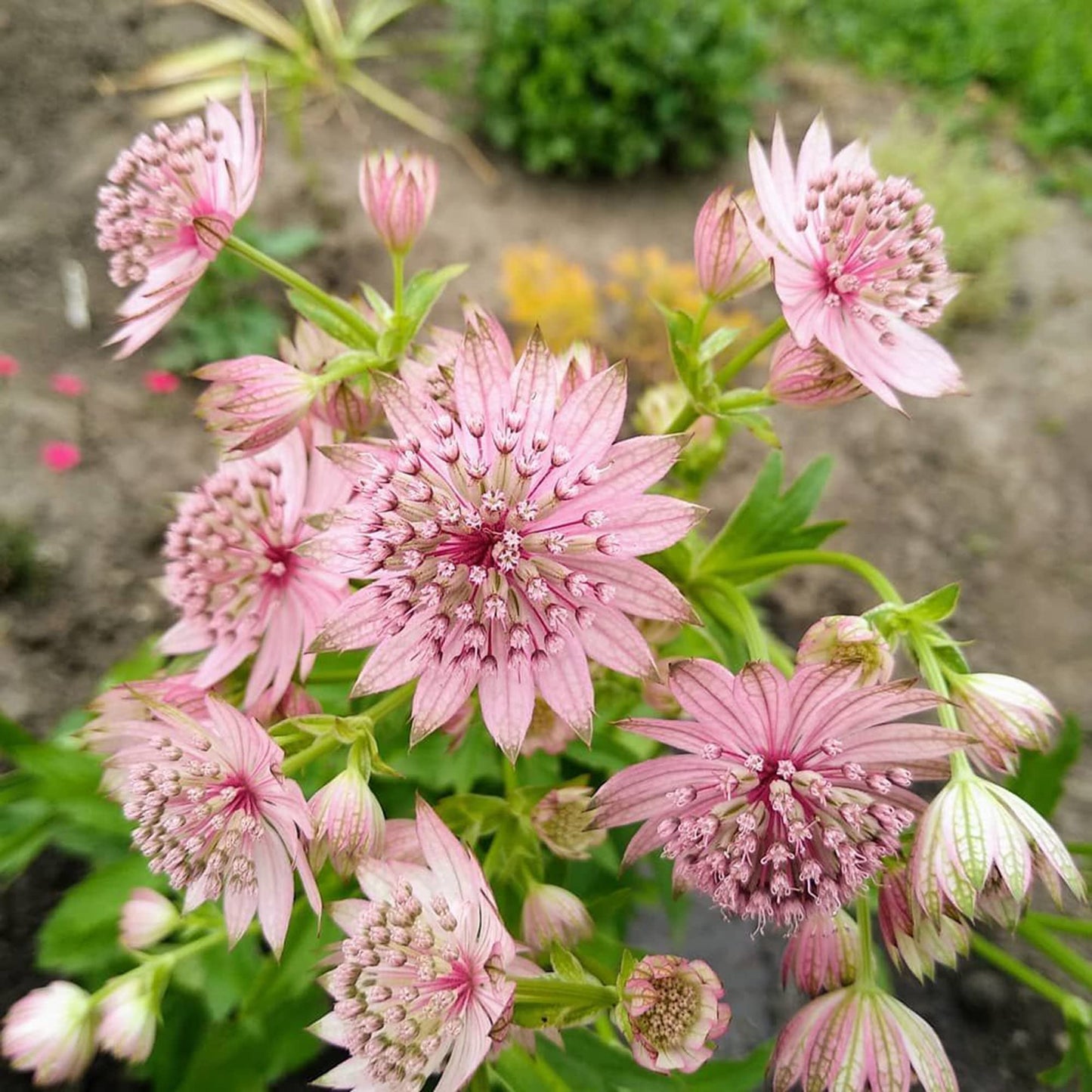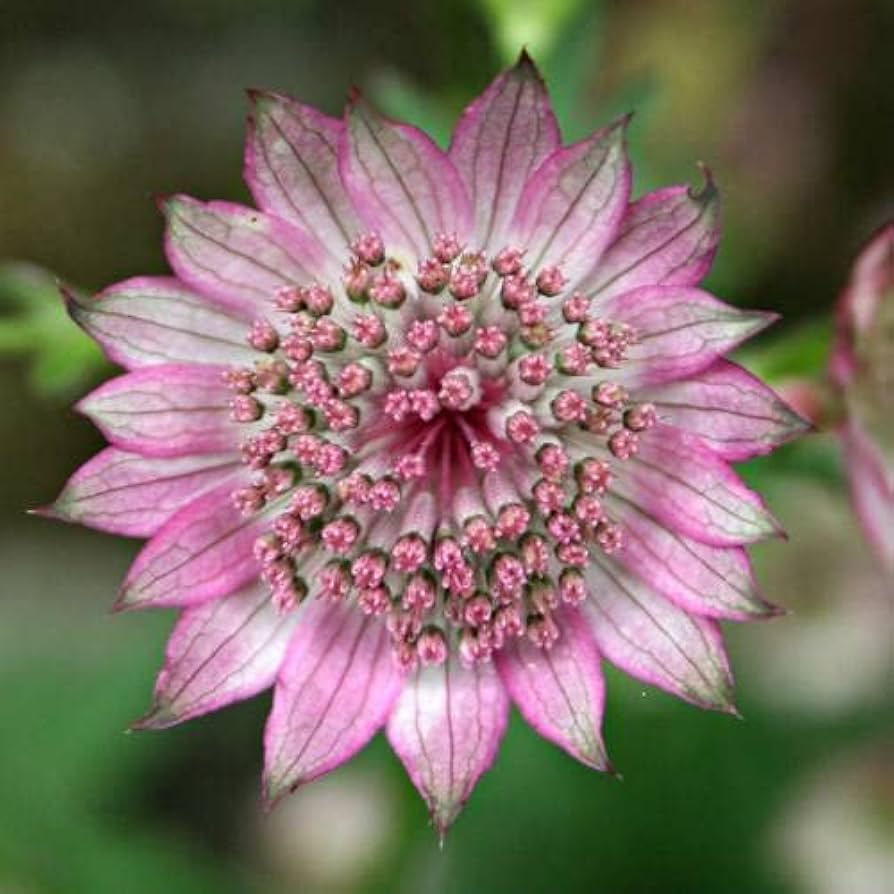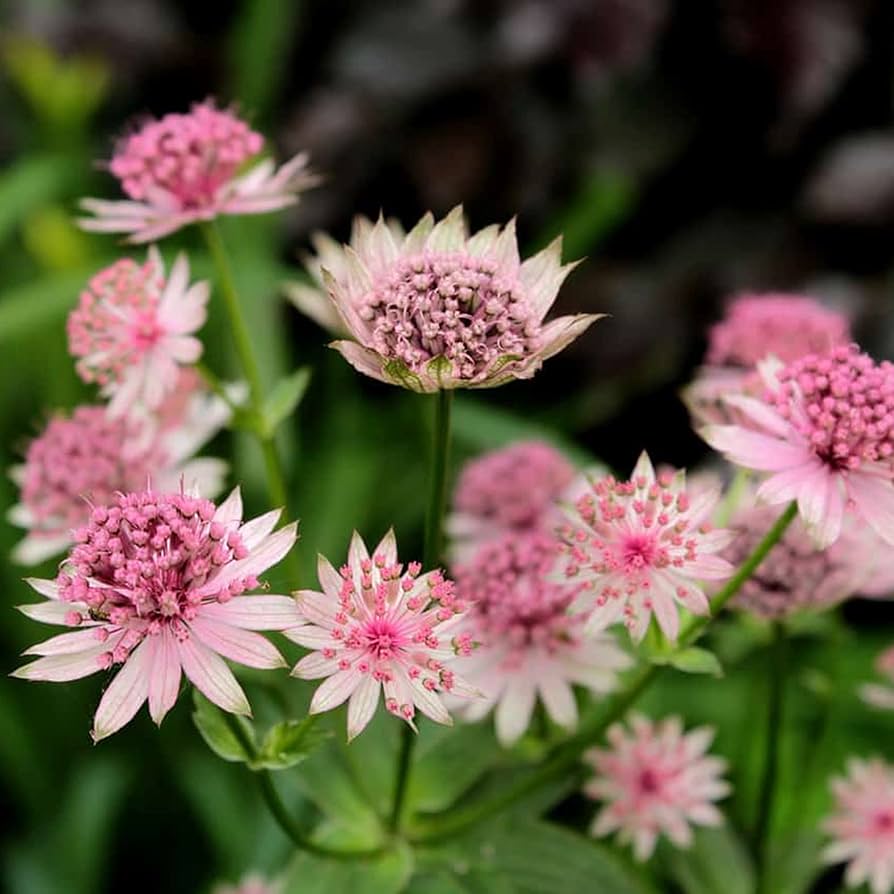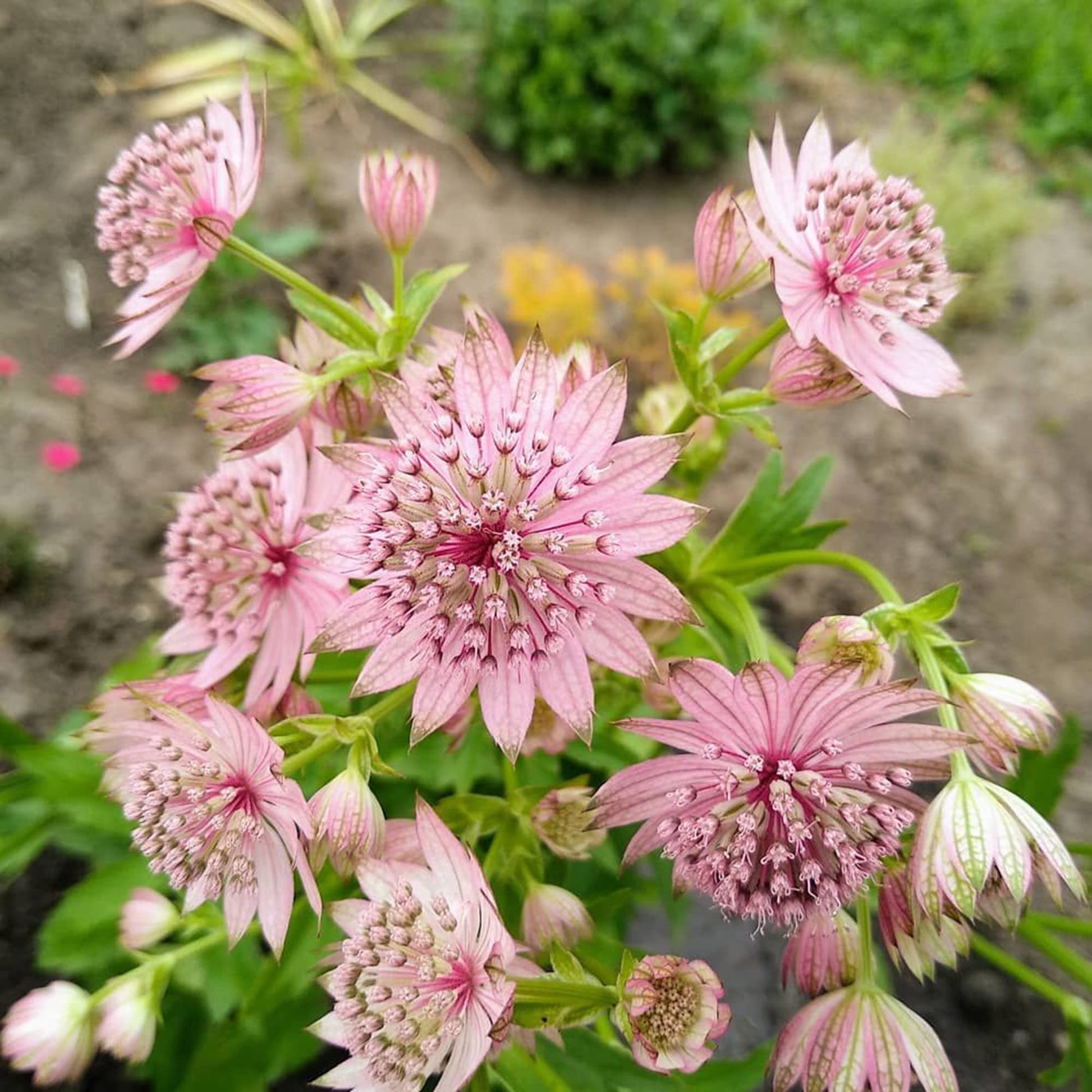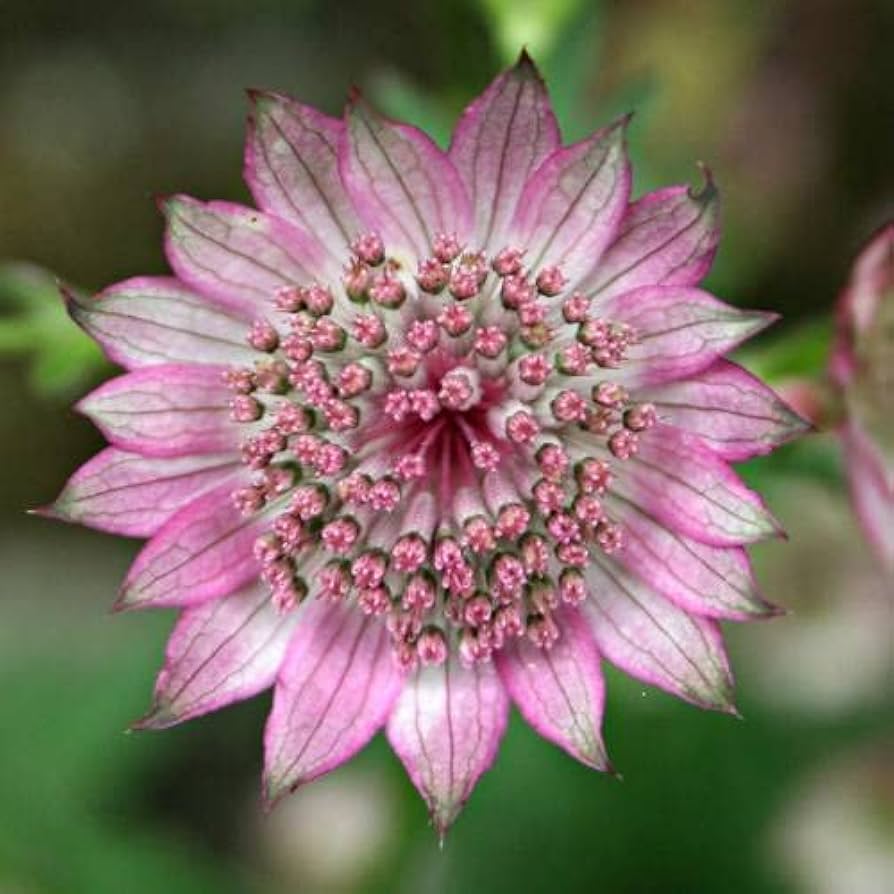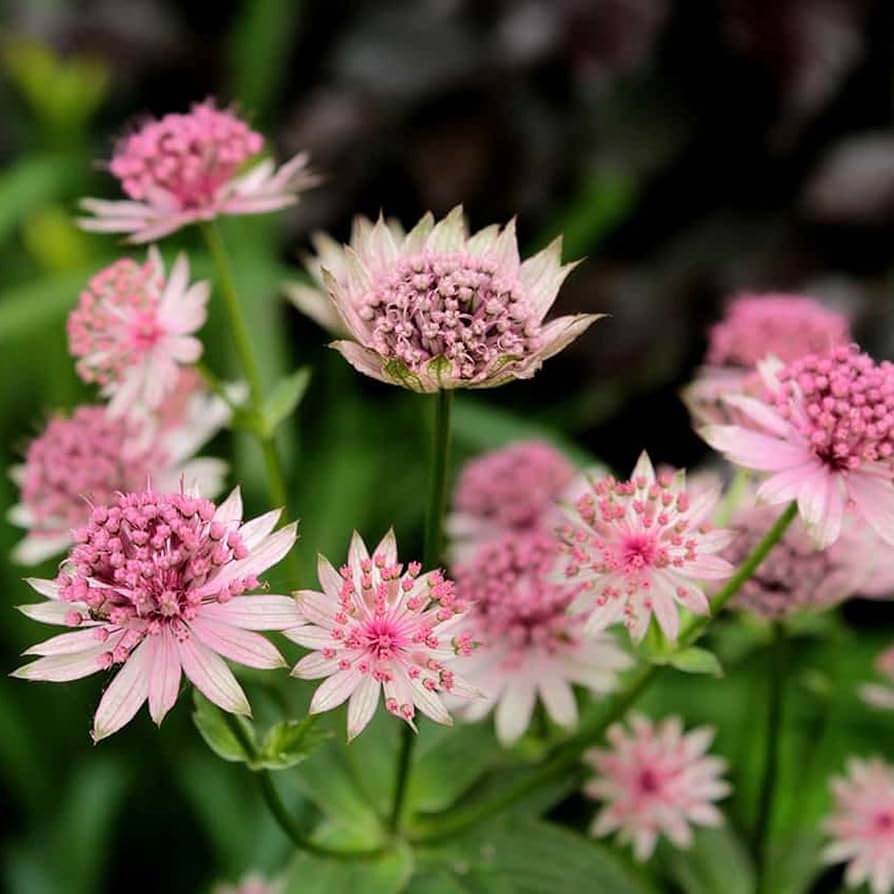Astrantia Ruby Cloud Astrantia Flower Seeds
Couldn't load pickup availability
Description
Astrantia Seeds (Garden Bonsai, Ruby Cloud, Hatties Scabiosa, Pro Pack)
Characteristics and Uses of Astrantia Plants
Astrantia, commonly known as Masterwort, is a stunning perennial that features unique, star-shaped flowers and lush foliage, making it a favorite among gardeners. The Ruby Cloud variety showcases vibrant ruby-red blooms that add a pop of color to any garden, while Hatties Scabiosa offers delicate, pale pink flowers that create a soft, romantic look. These plants are perfect for garden bonsai, borders, and mixed flower beds, attracting pollinators and enhancing the beauty of any outdoor space. With their long-lasting blooms and ability to thrive in various conditions, Astrantia plants are ideal for both novice and experienced gardeners.
Growing Conditions for Astrantia Plants
- Light Requirements: Prefers partial shade to full sun, thriving best with at least 4-6 hours of sunlight daily.
- Soil Type: Grows well in well-draining, fertile soil with a pH of 6.0 to 7.0.
- Temperature: Ideal growing temperatures range from 60°F to 75°F (15°C to 24°C).
Planting Tips for Astrantia
- Seed Depth: Sow seeds about 1/8 inch deep in the soil.
- Spacing: Space plants approximately 12-18 inches apart to allow for proper growth and air circulation.
- Timing: Start seeds indoors 6-8 weeks before the last frost or sow directly outdoors in early spring.
Watering Instructions and Tips
- Watering Frequency: Water regularly, keeping the soil consistently moist but not soggy.
- Watering Method: Use a soaker hose or drip irrigation to minimize water on the foliage and reduce disease risk.
- Signs of Overwatering: Yellowing leaves or wilting may indicate excess moisture; adjust watering accordingly.
Growing Zones
Astrantia is suitable for USDA zones 3-8 and can thrive in global zones with similar climates, making it a versatile choice for gardeners in various regions.
Key Benefits & Uses
- Attracts Pollinators: The vibrant flowers draw in bees and butterflies, promoting a healthy ecosystem.
- Long Blooming Period: Provides color and interest in the garden from late spring through fall.
- Versatile Uses: Ideal for borders, cut flower arrangements, and as a decorative element in any garden.
Best Uses in the Garden & Landscape
- Flower Beds: Perfect for adding color and texture to flower beds and borders.
- Container Gardening: Can be grown in pots, making them suitable for patios and balconies.
- Wildflower Gardens: Excellent for naturalizing and creating a wildflower effect in your garden.
Conclusion
Incorporating Astrantia seeds into your garden is a wonderful way to enjoy vibrant blooms and enhance your outdoor space. With their unique characteristics and ease of care, these seeds are perfect for gardeners of all levels. Trust bijaseeds, a big, trusted name in the seed world, offering a wide range of high-quality, non-GMO varieties to gardeners everywhere.
FAQ
How do I grow Astrantia?
To grow Astrantia, sow seeds in well-draining soil in a sunny or partially shaded location. Water regularly to keep the soil moist, and enjoy the beautiful blooms throughout the growing season.
When is the best time to plant Astrantia?
The best time to plant Astrantia is in early spring after the last frost or indoors 6-8 weeks before the last frost date for transplanting.
Are Astrantia difficult to grow?
Astrantia is relatively easy to grow, making it suitable for both novice and experienced gardeners. With proper care, they will thrive and provide a stunning display of color.
